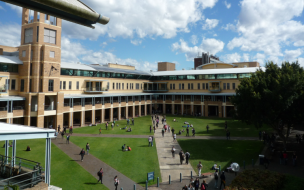The QS World University Rankings: Global MBA Rankings 2019 will be released later this month, and in preparation we’ve been talking to hundreds of the world’s top business schools about their MBA programs.
These conversations have furnished us with tons of interesting insights into the state of the MBA. To whet your appetite ahead of the rankings release, here are some of the most eye-catching things we’ve learned about the best MBA programs in the world.
The average MBA graduate increases their salary by 77% after graduation
It’s hard to overstate how much impact an MBA can have on your earnings, so here it is in cold hard figures. According to the information we received, the average salary for MBA students before their studies was $46,974. After graduation, the average salary had risen to $83,186—an increase of 77%.
The average top full-time MBA program will cost you over $55,000 in tuition
Based on the institutions we were able to speak to and get data from, the average MBA tuition cost is $55,438.
The cost of an MBA and whether it’s worth the investment are two of the most hotly-debated aspects of the degree. While $55,000 might seem a daunting figure, it’s worth remembering how much financial aid is available to you, and the clear return on investment you’ll get post-graduation.
Entrepreneurship is thriving but only the very few go on to start their own business
One of the most notable aspects of the QS Global MBA Rankings 2019 is the focus it places on entrepreneurship, rewarding schools which produce graduates who go on to be successful at starting their own business.
However, while entrepreneurship is an increasingly important element of the MBA experience, the number of students who go on to start their own business remains small. Only 6% of MBA graduates in our data went on to start a business after their studies.
In the battle for gender equality, students are beating faculty
While some business schools have managed to achieve gender equality in their cohorts, the overall trend is that there’s still some way to go. However, encouragement should be taken from the fact 39% of students are now female and all signs are that things are moving in the right direction.
What’s interesting is that the proportion of female faculty on the world’s top MBA programs has failed to keep up. Only 30% of faculty at schools we surveyed are female. If schools are truly to reflect society at large, a more diverse faculty must be a priority.
Want to read more insights into the world’s top MBA programs? Be sure to head to TopMBA.com on September 25 to find the complete QS Global MBA Rankings 2019 as well as the QS Business Masters Rankings 2019.
RECAPTHA :
23
5b
7f
94







